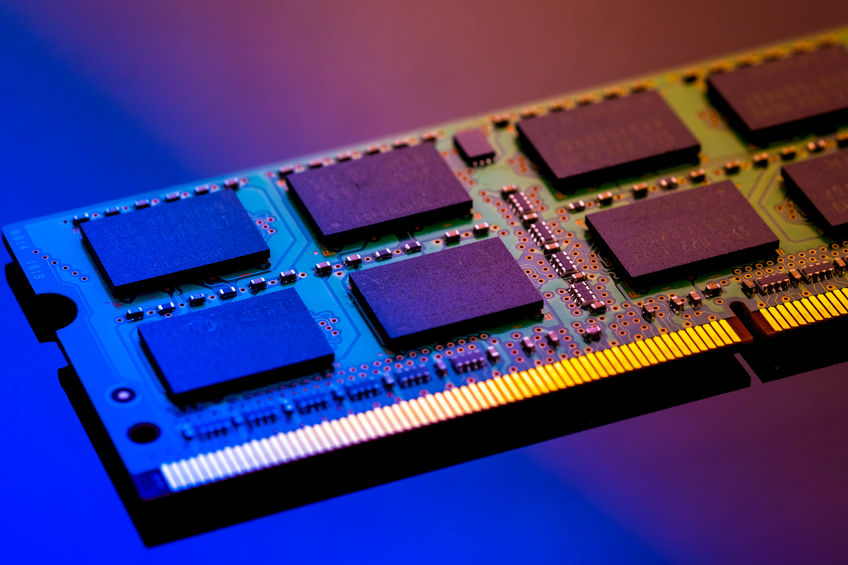This article was published as a part of the Data Science Blogathon
Introduction
If you’re learning data science and enjoy coding then you should get a laptop for yourself which is fast enough and gives you a smooth learning experience. So, in the learning process, a good laptop plays an important role because it will not stop you at any point trying out new and cool stuff in the domain of Data Science.
A traditional laptop may not be perfect for your Machine Learning or AI tasks. So, when choosing a laptop you should keep in mind some very important points which will for sure improve your learning experience and will make you unstoppable! So, we will be discussing some of those important points.
So, Let’s start!
Table of contents
Processor

1. Generation of the Processor
The processor is the main part of your computer. You must consider buying newer-generation processors. AMD and Intel processors are the best. AMD 5th Gen and Intel 11th Gen are the latest in the market. Intel 8th Gen or 10th Gen can also be considered. Processors advance with new generations. They give you the increased processing power, new hardware compatibility, thermal management, power efficiency, and much more.
2. Number of Cores and Threads
Cores(hardware) are the number of independent CPUs in a single chip. Threads are the instructions that are processed by a single CPU core. Almost every task you do in machine learning or data science needs parallel computations. So, in that case, the number of cores and threads of your CPU affect the performance significantly. Random forest algorithm in machine learning performs parallel computation. So, if you have a higher number of cores in your processor those can be put to use and random forest then can do faster computations.
So, always consider buying a laptop with a higher number of CPU cores and threads. 4 cores- 8 threads is the minimum requirement that is recommended. If you don’t have a tight budget then go for 6 cores or 8 cores or higher. It’s the best.
3. Cache Memory
Cache memory is the buffer between CPU and RAM. It is used to store those instructions which are frequently used so that they are available immediately to the CPU when needed again. It is usually measured in Megabytes (MB). Higher the cache memory, the faster your computer. An 8 MB of cache memory is recommended.
4. Base Clock speed: Frequency
The base frequency is defined as the minimum speed of the processor.
The higher the base frequency, the faster is the processor.
It is measured in Gigahertz(GHz).
RAM

5.RAM size:
I think this is the first thing people look at while buying a laptop or computer and it is important also. But it should be very clear that increasing the RAM size is not going to increase the speed of your computer much.
Higher RAM allows you to multi-tasking. So, while selecting RAM you should go for 8GB or greater. 4GB is a strict no because more than 60 to 70% of it is used by Operating System and the remaining part is not enough for Data science tasks. If you can afford then go for 12 GB or 16GB RAM that is best.
Storage: Secondary Memory

6.Storage type:
Laptops come with HDDs i.e. Hard Disk Drives. They are really very slow. A laptop even with i7 and HDD is very slow. HDDs take much time to open and load a program because they have mechanical parts which delay the processing of information and reduces durability. So, the best alternative for this is SSD(Solid State Drive). SSDs are much powerful than HDDs. They do not have any moving parts and provide good performance. Hence, try to go for SSD, the difference you will see is amazing.
7. Storage size:
Buying a laptop with SSD is already costly. Generally, HDDs come with 1TB but an SSD of 1TB may not be affordable so go for 512GB. But do not go below this
Graphic Card(GPU)
8. Size of GPU:
Recommended GPU size is 4GB or higher.
9. Brand of GPU:
You might be aware that NVIDIA and AMD are the two major brands of Graphic Cards. A separate GPU is preferred because then you have a separate graphic card in which the average GPU has more than 100 cores whereas standard CPUs provide you only 4 or 8 cores. So, now you can imagine the performance increase.
Tensorflow deep learning library uses CUDA which compiles only on NVIDIA graphics cards. So, if you are going for deep learning tasks, recommended is to go for an NVIDIA GPU of 1650 or higher.
Display

10. Blue light filtering feature:
Machine learning and data science students spend hours of time in front of their laptops. And as you know that almost every electronic display emits harmful blue lights. So, it damages your eyes. And your eyes are really important and you should keep good care of them. Hence go for laptops or monitors certified low-blue light and flicker-free screens. This is very important and shouldn’t be ignored.
11. Display size:
The display size must be 15.6 inches or 17.3 inches. Do not go below this. If you can afford go for bigger screens or monitors and connect them to your laptop. Display resolution should be a full HD (1080p) or an HD(720p) display.
12. Operating System(OS):
Windows 10 is recommended for data science students because it is user-friendly and configuring anything won’t take much effort. But you can go for another operating system as well like Linux. Install it separately or you can also run it in a virtual box.
13.Reliability of laptop:
Reliability is how often your laptop fails when operating. Some very common and annoying issues are blue screen errors, unexpected shutdowns, and other hardware-related issues. So, to avoid all these issues always go for a branded laptop.
End Notes:
There are n number of laptops in the market with very high and excellent specifications, but this confuses a lot if you a person don’t have much knowledge. These are some detailed points to consider while buying a laptop for data science tasks. So, I hope this article helps.
Thanks for reading if you reached here 🙂
Let’s connect on LinkedIn.
The media shown in this article are not owned by Analytics Vidhya and are used at the Author’s discretion.
FAQs
1.Powerful processor (Intel Core i7/AMD Ryzen 7 or higher)
2.Ample RAM (16GB or higher, 32GB for complex tasks)
3.Fast SSD storage (512GB or higher, 1TB for large datasets)
4.Dedicated NVIDIA GPU (GTX 1650 or higher for demanding tasks)
5.High-resolution display (15-inch or larger, 1920×1080 or better)
6.Long battery life (8 hours or more)
7.Recommended laptops: Dell XPS 15, Apple MacBook Pro, HP Spectre x360, Acer Predator Helios 300, Razer Blade 15
Ryzen 5 processors are a budget-friendly choice for data science, handling light to moderate workloads like machine learning and data visualization. For very demanding tasks, consider Ryzen 7 or Ryzen 9 processors
1.Dell XPS 15: Powerful Intel Core processor, NVIDIA GeForce RTX graphics card, 16GB RAM, long-lasting battery
2.Apple MacBook Pro: M1 or M2 chip designed for machine learning, up to 64GB RAM, long-lasting battery
3.Razer Blade 15: Intel Core i7 or i9 processor, NVIDIA GeForce RTX 3060 or 3070 graphics card, 16GB or 32GB RAM, fast refresh rate display, long-lasting battery.
These laptops are all powerful and have the features you need to run AI and machine learning tasks. The best laptop for you will depend on your specific needs and budget.
When choosing a laptop for AI and machine learning, consider the processor, graphics card, RAM, storage, display, and battery life.




